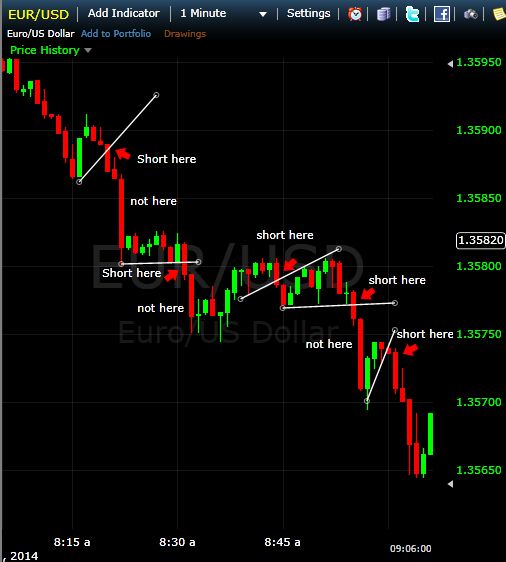Anticipate Where the Price Is Going to Be
Wayne Gretzky, the greatest NHL goal scorer of all time, said “A good hockey player plays where the puck is. A great hockey player plays where the puck is going to be.”
This applies to traders as well. Most traders are always late getting into trades, entering near the tail end of a move or right before a reversal. This is because–like in hockey–they are simply entering trades based on where price is, without much regard for where it is going to be.
There is this assumption that just because we got into a trade the price will now magically run our favor. Price doesn’t usually act like that, it makes some progress and then retraces, makes some progress and then retraces, in large and small waves. Yet traders expect this to somehow change when they enter a trade.
It doesn’t change. Most of the time price moves in a back and forth fashion which means that you need to expect this type of behavior on most of your trades. Therefore don’t just assume the price will maintain its exact trajectory; you have to anticipate where it going to move to get good entry points.
A crystal ball is not required, all you need to know is that the price progresses and retraces. If the price is currently progressing in the trending direction you already know a retracement is coming…so why buy when the price is progressing, and potentially end up with a bad price right before the price retraces?
Be patient; anticipate the retracement and wait for it, then be ready to act on it when it comes. Trade based on where the price is going to be, not where it is currently.
One of the most common mistakes is to buy on new highs or sell on new lows (see Are You Addicted to New Highs and New Lows?). Most of the time when traders do this the “progress” wave is close to over. The price just barely moves above a former high or barely below a former low and then retraces. That doesn’t mean some money can’t be made trading new highs and new lows under certain conditions, but usually when traders do this they are ignoring the basic precept that markets see-saw back and forth even while trending.
Figure 1 shows this in action. On a 1-minute chart we let the price fall (during a downtrend, rise during an uptrend) and then anticipate the retracement. We can then use simple tools like trendlines to help determine when to go short during the retracement. We short when the retracement begins to break down and the price moves back in the trending direction. But we act quickly.

The areas marked “not here” represent areas where you are too late. You should already be in a position by that point, anticipating that the price will move lower based on the overall trend and the pullback ending.
Final Word
The market moves in waves and that is all we really need to know to anticipate where the price is going to go–in general terms of course, we can’t know the exact price the asset is going to stop at or run to. Most traders enter too late, because they wait for all sorts of confirmation. The problem is, if you wait for too much confirmation you are likely to sabotage your efforts. Imagine playing hockey and instead of skating to where you think your teammate is doing to pass the puck, you instead yell “Hey, I am doing to skate about 20 feet down the ice; pass it to me there.” By waiting seeking this confirmation the other team knows what you are doing and will thwart your efforts. The same thing happens in trading. You need to act early, so that you can profit quickly; you’ll be getting out just as the novice traders who are about to lose get in.
By Cory Mitchell, CMT – https://twitter.com/corymitc